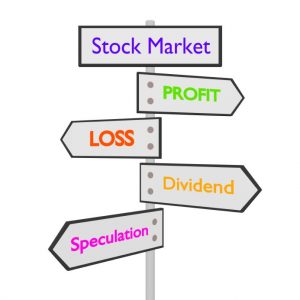Dividend Value Builder Newsletter
Stop Loss Orders: An Investment Tool Value Investors Should Avoid?
Stop loss orders are a widely used investment tool that value investors should mostly avoid. Many investment pundits frequently recommend using stop loss orders as a risk management tool. But for value investors this can be the wrong tool.
What Is a Stop Loss Order?
A stop loss order instructs a broker to buy or sell a stock once the price reaches a specified price, known as the stop price. Investors use these orders to limit losses when the price of investment decreases (if the investor is long), or when the price of an investment increases (if the investor is short).
Additional Reading: Investing Principles Fundamental to Successful Outcomes
Does a Stop Loss Order Make Sense for a Value Investor?
What investing strategies do you employ? If you are a growth or momentum investor the stop loss order totally makes sense. If you are not basing your investment decisions on valuation the idea of cutting losses is sound.
However, if you are a value investor who has done his homework, and purchased a good investment, why would you want to sell that investment just because the price decreases. A stop loss order may cause you to sell just before the stock rebounds. Studies have shown that selling stocks at bargain prices does not boost portfolio returns.
Another pitfall of stock loss orders is that you may not get your stop loss trigger price. Once a stop loss order is triggered it becomes a stop market order and will be executed at the next available price. That market price could be much different than your specified stop loss trigger price.
2010 Flash Crash
On May 6th, 2010 the stock market experienced a “flash crash” where the Dow Jones Industrial Average, already down 300 points, fell an additional 600 points in 5 minutes for a near 1000 point loss. Twenty minutes later the market had regained most of the 600 point loss. Many financial “experts” recommended using stop loss orders as a strategy to stop or limit a loss, but volatility makes the stop loss order a poor risk management strategy.
Stop Loss Order Disaster Example
Proctor & Gamble (PG), known to be a very stable low volatility stock, fell hard during the 2010 flash crash as stock loss orders were triggered and became market orders. PG went from $60 to $40 and back in less than 30 minutes.
If someone had placed a stop loss at $45, when the price of PG declined to $45, that order became a market order and the stock was sold at the next price available; possibly lower than $45. Minutes later PG had rebounded to $60, leaving investors stunned and unable to buy the stock back without a large loss.
The flash crash demonstrated that stop loss orders are often harmful to investment portfolios. Many investors with executed stop loss orders were harmed that day.
Value Investing and the Stop Loss Order
Personally I think the stop loss order should be avoided by the value investor. If I buy a good company at a reasonable price, and it gets cheaper, I will reevaluate my buy decision because I want to feel comfortable that it is not a value trap. But unless, something has fundamentally changed I would be apt to buy more, not sell.
Selling after a stock has fallen in price should only be done because something has changed or you have reason to believe you made a mistake. It does not make sense to sell because the investment has fallen an arbitrary predetermined amount.
Lesson: Avoid the pitfalls of a stop loss order. If the investment price has decreased, and the margin of safety increased, you should consider adding to your position in that investment.
Related Reading: Selling a Stock: Good Reasons and Common Mistakes
Minimize Large Portfolio Drawdowns
Invest With Confidence in Less Time - Manage Your Portfolio Without Behavioral Errors

